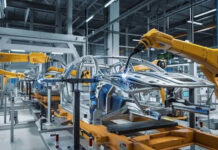Software glitches continue to plague the auto industry, as automobiles become increasingly reliant on software. BMW and Mercedes have typically over 100 million lines of codes to operate. Software is the leading reason that many cars fail and need to be repaired.
Automakers are considering remote updates to their software, which would allow vehicle owners to skip going to the auto dealer to have their cars repaired.
Dozens of low-powered computers reside in most automobiles, and lines of code continue to be introduced as vehicles become more complex. Tesla Inc. integrated hardware into many of their vehicles, which is available for advanced driver assistance. However, the hardware was only enabled through progressive software updates.
The strategy of progressive software updates allows Tesla to include the hardware required for certain features that can be implemented in the future as software bugs are corrected.
“The recall of Tesla Model 3 vehicles is perhaps one of the most visible motor vehicles recalls of 2018. The recall was ordered after over-the-air (OTA) updates of the vehicle’s software disabled key features including automatic emergency braking and autopilot control,” explains Bogdan Martinovich.
Fiat had to recall 5.3 million vehicles last year due to a software glitch which left vehicles unable to deactivate cruise control. Owners were warned that they should not engage their cruise control for the risk of causing an accident. No injuries or crashes occurred as a result of the glitch, but millions of vehicles had to be brought back to dealerships to have software upgraded.
NHTSA officials claim that drivers of vehicles would be able to deactivate the cruise control by applying the brakes until the vehicle comes to a stop. Drivers could also choose to put the vehicle into neutral and braking to stop the vehicle’s motion.
Once the vehicle is stopped, drivers could put the vehicle in park and the park position would be able to cancel the cruise control.
NIO, a Chinese startup that aims to rival Tesla, suffered from a software glitch in February that stopped the vehicle in Beijing’s heavy traffic. The incident occurred when the driver initiated a software update while the vehicle was stopped. The driver didn’t know that the update would shut the vehicle down and would trap the driver in the vehicle.
The vehicle took an hour to update, shutting the vehicle’s electric doors off in the process.
The driver was a potential buyer and was test driving the vehicle when the incident occurred. NIO claims that there are two confirmations and five steps that need to be taken prior to an update being made. Warnings to the driver convey that the vehicle will need to be parked during the installation process and that all relevant functions will be shut down.


















